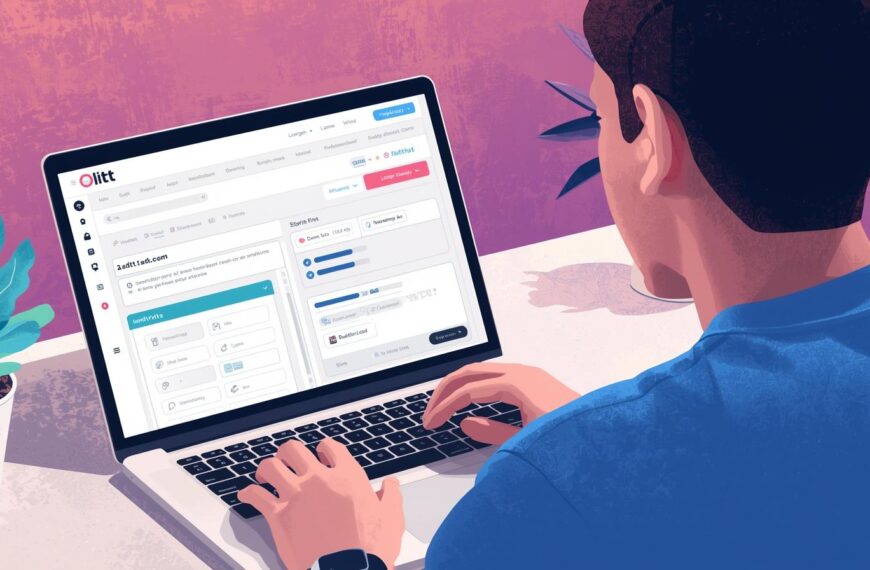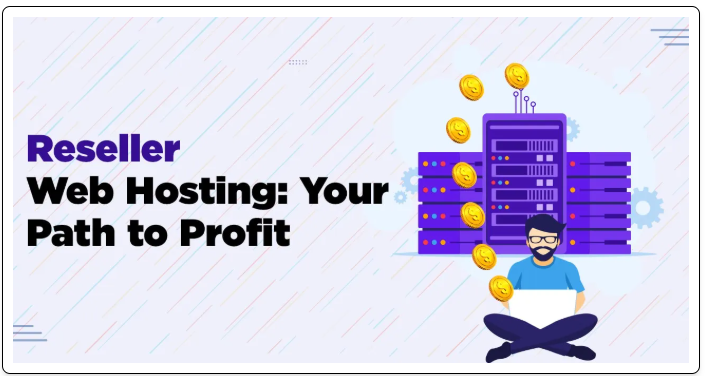Caching is one of the simplest ways to make your site feel instant.
Many people hear the word catching and assume it is something highly technical, but the truth is much easier to understand.
Catching is the process of saving copies of your website’s files so users don’t have to download them again every time they visit.
This reduces loading time, reduces server strain, and creates a smooth browsing experience.
In this guide, I’ll take you through how catching works, why it matters, the types you should know, and how you can use it to speed up your site.
I will also show you where Truehost fits into this journey and how we help users get the benefits of catching effortlessly.
What Is Caching and Why Does It Make Sites Faster?
Caching works by storing frequently requested website files so they can load instantly on repeat visits.
Think of it as saving shortcuts so your browser or server doesn’t redo the same work over and over.
When someone loads your site for the first time, their browser downloads images, scripts, styles, and text.
With proper catching, many of these items get saved, allowing later visits to load almost instantly.
This is why catching is one of the core pillars of web performance.
It cuts loading time dramatically and gives visitors a sense of speed and stability that keeps them coming back.
How Caching Actually Works

Catching reduces the work needed to display your pages.
Instead of regenerating the same files, the browser or server displays stored versions.
Your browser stores files like images, CSS, and small scripts.
Your server stores processed pages or database results.
Because the data is already saved, the page doesn’t need to be “rebuilt.”
This is what makes the site feel instant.
Here are common items saved through catching:
- Images
- HTML pages
- CSS files
- JavaScript files
- Product pages
- Database queries
- API calls
Every item that gets cached reduces the amount of work done on each page load.
This is why catching is so powerful for performance.
The Main Types of Caching You Should Know

There are multiple kinds of catching, and each plays a different role in site speed.
Understanding them helps you choose the right setup.
1. Browser Caching
Browser catching saves files directly on the visitor’s device.
This is why returning visitors experience almost instant loading.
2. Server Caching
Server catching stores pre-built versions of your pages so the server doesn’t have to process the same request multiple times.
This is especially helpful for websites with heavy content or many users.
3. CDN Caching
CDN catching stores copies of your site across different global servers.
Visitors load the version closest to them for improved speed.
4. Object Caching
Object catching saves database queries.
This reduces strain on your database and speeds up dynamic applications.
5. Full-Page Caching
Full-page catching stores a complete version of your page.
This method can turn even slow pages into instant-loading ones.
What Each Type of Caching Does
| Caching Type | How It Works | Best For |
|---|---|---|
| Browser Catching | Saves files locally | Repeat visitors |
| Server Catching | Stores pre-built pages | High-traffic sites |
| CDN Catching | Serves cached content globally | International audiences |
| Object Catching | Saves database queries | CMS and ecommerce |
| Full-Page Catching | Saves entire HTML pages | Blogs and stores |
Why Caching Matters for Websites Today

The digital world is faster than ever, and users expect websites to load instantly.
Catching helps you meet these expectations without upgrading to expensive servers.
Here are key benefits you get from catching:
- Faster page loading
- Lower hosting costs
- Better SEO performance
- Improved user experience
- Fewer bounce rates
- Higher conversion rates
- Stronger site reliability
Speed affects everything from user trust to business revenue.
This is why catching isn’t optional anymore.
Real Example: How Caching Creates Instant Speed
Let’s say your homepage normally takes 2 seconds to load.
It loads that slowly because it needs to process code, load images, and fetch database results.
Once you activate full-page catching, the server creates a cached version of the page.
The next time a visitor comes, the server loads the stored version instantly.
This can reduce load time from 2 seconds to 0.2 seconds.
That simple improvement can transform the entire user experience.
Signs Your Website Needs Better Caching
Caching problems show up as performance issues.
If your site feels slow or unstable, catching is often the missing piece.
Common warning signs include:
1. Slow loading on repeat visits
Browsers should not download everything again.
2. Frequent server overloads
Catching reduces load during traffic spikes.
3. Low Google PageSpeed Insights scores
Catching issues usually show up in red warnings.
4. High bounce rate
Slow sites drive users away immediately.
5. Slow ecommerce checkout
Catching makes product pages load much faster.
If any of these sound familiar, your catching setup needs attention.
Luckily, the fix is often simple.
How to Enable Caching on Your Website
Your platform determines how you activate catching.
The good news is that most platforms allow easy setup.
For WordPress Users
You can use plugins to activate catching quickly.
Many do not require any technical knowledge.
Popular plugins include:
- LiteSpeed Cache
- WP Super Cache
- W3 Total Cache
- WP Rocket
These tools activate browser catching, object catching, and page catching automatically.
For Custom Sites (PHP, HTML, Laravel, Node.js)
You can use server headers to control catching.
For example:
Cache-Control: max-age=31536000
This tells browsers how long to keep files.
Servers like NGINX and Apache also support catching rules.
Developers can configure strong catching policies that speed up your site.
For Ecommerce Sites
WooCommerce, Shopify, and OpenCart benefit from CDN and full-page catching.
This makes product pages load faster during traffic peaks.
Helpful External Resources
If you want to understand the technical layer deeper, check:
- Google Developer Guide: https://developers.google.com/web/fundamentals/performance/optimizing-content-efficiency/http-caching
- Cloudflare Caching Basics: https://www.cloudflare.com/learning/cdn/what-is-caching/
These guides break down catching from a developer’s view.
They also include real-life examples.
Best Practices for Effective Caching
Catching only works well when managed correctly.
Here are the best practices to follow.
1. Set proper expiry times
Static files can be cached for months, but HTML should have shorter expiry.
2. Use a CDN
Global catching improves performance for international traffic.
3. Clear caches after major updates
This prevents outdated pages from showing.
4. Regularly test your website speed
Use tools like GTMetrix or PageSpeed Insights.
5. Avoid overlapping catching plugins
Using too many plugins causes conflicts.
6. Combine different types of catching
Browser + CDN + server catching is a powerful combo.
Good vs Bad Caching Habits

| Good Practice | Bad Practice |
|---|---|
| Clear cache after updates | Never deleting cache |
| Use a CDN | Relying on a single server |
| Cache static files | Caching sensitive data |
| Test speed regularly | Ignoring performance issues |
| Combine catching methods | Installing multiple cache plugins |
How Truehost Helps You Build a Faster Website

When we talk about catching and site performance, hosting plays a major role.
This is where Truehost comes in.
At Truehost, we use fast servers and built-in caching systems that improve site performance without extra configurations.
Our platform supports browser catching, LiteSpeed caching, and CDN integration for global speed.
We also guide our users on how to enable catching through plugins or server rules.
When we say “we,” it’s because Truehost’s entire hosting environment is built with performance in mind.
If you want hosting that fully supports catching without stress, Truehost is a great place to start.
We make sure your site loads quickly and stays stable, even during heavy traffic.
Conclusion
Catching is one of the easiest ways to make your website feel instant.
It works by storing important files and avoiding unnecessary downloads.
With browser catching, server catching, CDN catching, and object catching, you can dramatically improve your site’s speed.
These techniques make your site smoother, stronger, and more reliable.
You now understand how catching works, why it matters, and how to apply it on your site.
And if you need a hosting provider that supports full catching optimization, Truehost is ready to help you get started.
 Domain Search
Domain Search Whois Lookup
Whois Lookup Domain Transfer
Domain Transfer All Domains
All Domains Web Hosting
Web Hosting Email Hosting
Email Hosting Reseller Hosting
Reseller Hosting Windows Hosting
Windows Hosting cPanel Hosting
cPanel Hosting VPS Hosting
VPS Hosting Managed VPS Hosting
Managed VPS Hosting Dedicated Server
Dedicated Server SSL Certificates
SSL Certificates All SSL
All SSL


